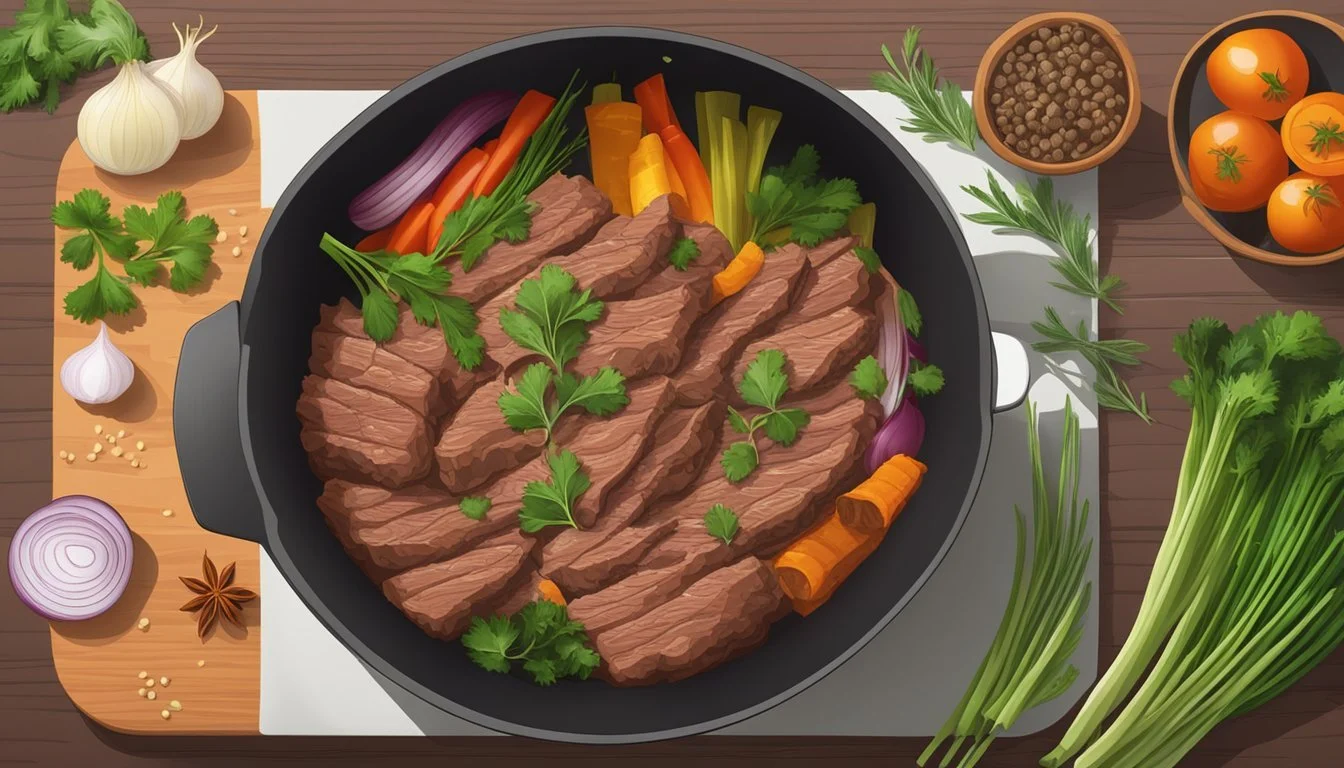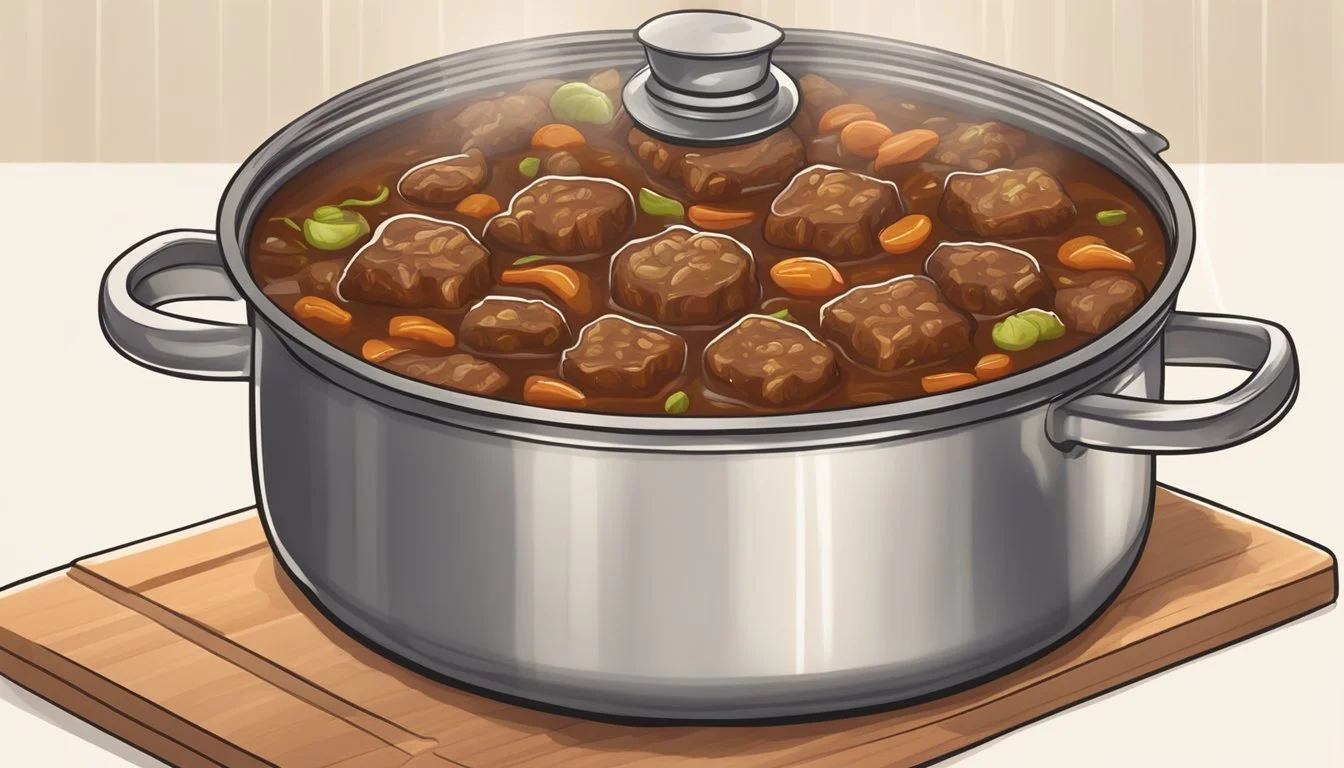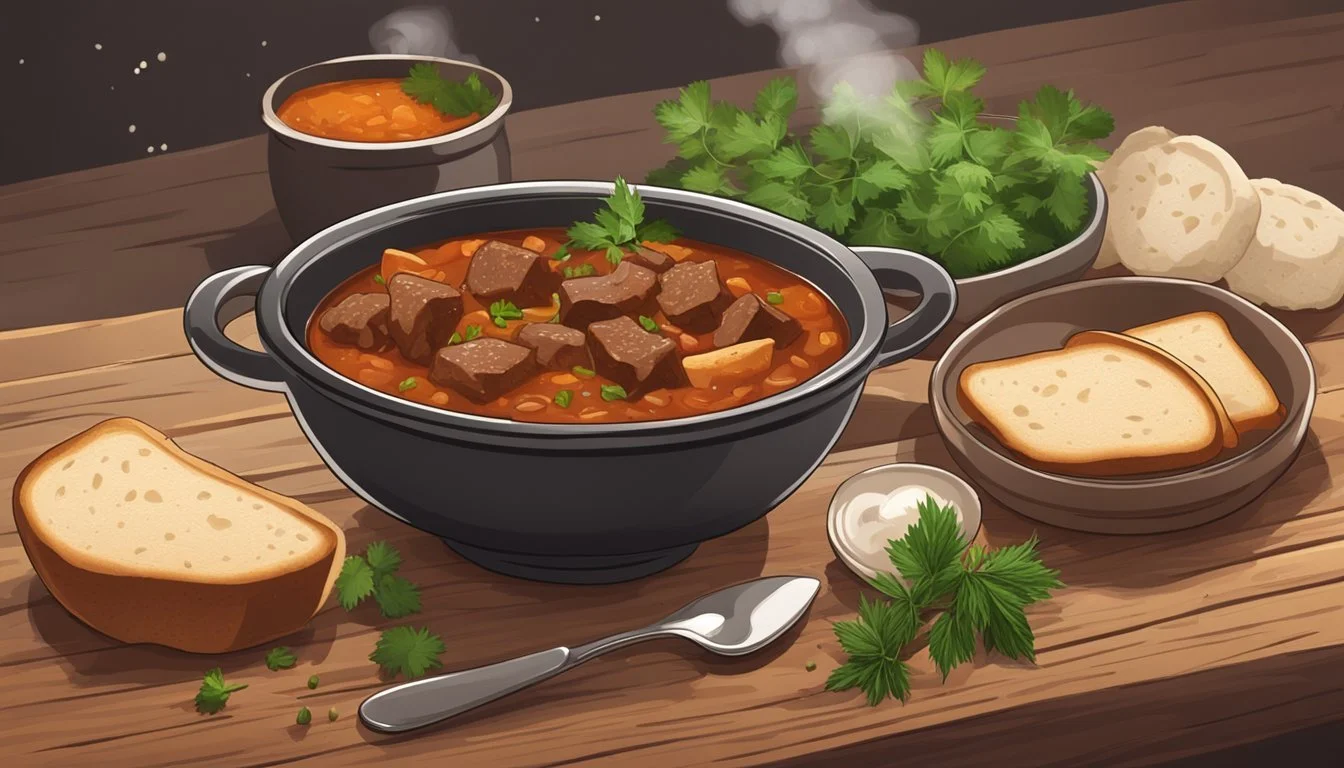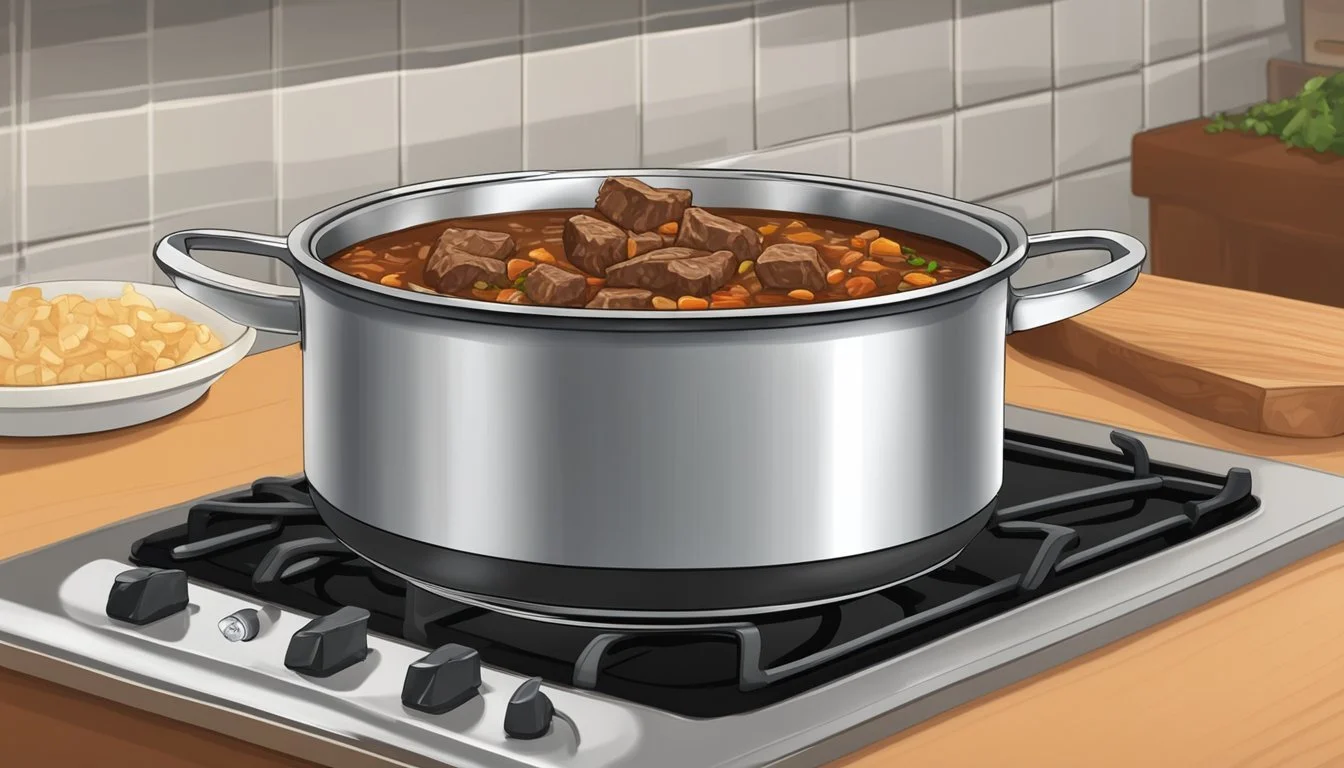How Long Does Beef Goulash Last?
Storage Tips and Shelf Life
Wondering how long your beef goulash will last in the fridge? Beef goulash, whether you’re making a classic Hungarian goulash or another variation, typically lasts for about 3 to 4 days when stored properly in an airtight container in the refrigerator. Proper storage is crucial to maintain the dish's flavor and safety.
For those who want to extend the life of their goulash, freezing is a great option. When stored in the freezer, beef goulash can last up to 3 months without losing its rich taste and tender texture. Simply reheat it thoroughly before serving to enjoy a meal that tastes as fresh as the day it was made.
Sometimes you might wonder if there’s a difference in shelf life between traditional and modern takes on this hearty dish. Rest assured, whether it’s a rich, paprika-laden Hungarian goulash or a more contemporary version, the storage guidelines remain consistent. Keep enjoying your delicious goulash by storing it correctly!
Ingredients and Preparation
Making beef goulash involves careful selection of ingredients and thoughtful preparation to create a rich, flavorful dish.
Meat Selection and Preparations
The meat for beef goulash is typically beef chuck due to its rich marbling, which adds flavor and tenderness.
First, cut the beef into uniform cubes. Season the beef with salt and pepper, ensuring it is evenly coated.
Browning the beef is crucial for developing depth of flavor. Heat a large Dutch oven over medium-high heat with a drizzle of oil. Add the beef in batches to avoid overcrowding and sear until a rich brown crust forms on all sides.
Vegetables and Spices
Vegetables are fundamental in achieving the hearty nature of goulash. Use onions, garlic, bell peppers, carrots, and potatoes.
Chop the vegetables into similar sizes to ensure even cooking. Sauté the onions and garlic until softened and fragrant; this forms the flavor base.
Spices like paprika, caraway seeds, and bay leaves help build a robust profile. Sweet paprika provides a mild, sweet heat, while caraway seeds add a unique, earthy warmth.
Additional Ingredients
Tomatoes in various forms are key. Use diced tomatoes, tomato sauce, and tomato paste to add richness and depth. Beef broth or beef stock helps to create the liquid base, adding more flavor.
For convenience, canned tomatoes can be used, or opt for fresh tomatoes if preferred. Different goulash variations might include noodles or potatoes for texture and variety.
Cooking Methods
Beef goulash can be cooked using several methods. A Dutch oven is traditional and provides even heat distribution. After browning the beef and sautéing the vegetables, return the beef to the pot, add the liquids and spices, and let it simmer gently for 1.5-2 hours until the meat is tender.
Alternatively, a slow cooker can be used. Combine all ingredients and cook on low for 6-8 hours. This method is hands-off and allows flavors to meld effortlessly.
Cooking on the stove is another option for those who prefer more control over the process, allowing for adjustments in heat and seasoning as it cooks.
Seasoning and Flavoring
Balancing the flavors is essential in beef goulash. Taste and adjust seasoning with salt and pepper as needed throughout cooking.
Incorporate ingredients like bay leaves and additional paprika for enhanced aroma and taste. Finish with a touch of sour cream for creaminess and a handful of chopped fresh parsley for a fresh, vibrant touch just before serving.
Storing Beef Goulash
Proper storage of beef goulash is key to preserving its flavor and safety. By following recommended guidelines for refrigeration, freezing, and reheating, you can enjoy your goulash for days to come.
Refrigeration
Beef goulash should be stored in the fridge to maintain its freshness. Use airtight containers to prevent any contamination. Freshly cooked beef goulash can be kept safely in the fridge for up to 3 to 4 days. Store the goulash within 2 hours of cooking to minimize the risk of bacterial growth.
For best results, portion the goulash into shallow containers. This promotes quicker cooling and helps maintain the texture and taste of the dish.
Freezing
Freezing beef goulash extends its shelf life significantly. In an airtight container, goulash can be frozen for up to 3 months. Within this time frame, the dish retains optimal taste and texture. Beyond 3 months, the goulash might still be edible but could become bland and suffer from freezer burn.
To make thawing easier, freeze goulash in single-serving portions. Label each container with the date of freezing to keep track of its storage duration.
Shelf Life
The shelf life of beef goulash varies based on how it's stored. In the fridge, it stays fresh for 3 to 4 days. When frozen, it lasts for up to 3 months. Always use airtight containers to maximize shelf life and maintain quality.
Consider the ingredients used in the goulash. Fresh ingredients typically lead to a shorter shelf life compared to those already cooked. Proper storage prevents spoilage and preserves the dish's flavorful essence.
Reheating
Reheating beef goulash involves careful practice to retain its flavor and texture. For quick reheating, use a microwave. Place the goulash in a microwave-safe dish, cover it, and heat on medium for 2-3 minutes, stirring occasionally.
For a more consistent temperature, reheat on the stove. Place the goulash in a saucepan over low heat, stirring occasionally until heated through. The oven is another method; preheat to 350°F (175°C), place goulash in an oven-safe dish, cover with foil, and heat for about 20 minutes.
Always ensure that reheated leftovers reach an internal temperature of 165°F (74°C) to ensure safety.
Serving Suggestions
Serving beef goulash with complementary sides and ideal garnishes enhances its rich flavors and makes it a satisfying meal. Specific accompaniments and garnishes can transform your dish into a delightful culinary experience.
Accompaniments
Beef goulash pairs wonderfully with a variety of comfort foods. Popular choices include noodles, potatoes, and spätzle.
Mashed potatoes are a classic choice. Their creamy texture balances the hearty goulash sauce. Another great option is crusty bread; it’s perfect for soaking up the rich broth. Dumplings, whether bread or potato-based, add a comforting touch and absorb the deep flavors of the goulash.
Spätzle, a type of soft egg noodle from Central Europe, provides a traditional pairing. For those preferring lighter sides, incorporating simple veggies like steamed green beans or roasted carrots offers a fresh contrast to the meat-heavy goulash.
Garnishes
Garnishing beef goulash elevates its presentation and enhances its taste. Fresh parsley brings a burst of color and a subtle herby flavor that brightens the dish.
A dollop of sour cream adds a tangy contrast and creaminess, balancing the spices of the goulash. Cheese sprinkled on top can provide an additional layer of richness and gooey delight, especially if using a mildly tangy variety like shredded Gruyère or a sharp Cheddar.
In summary, using these specific accompaniments and garnishes will not only complement the flavors of beef goulash but also enhance the overall dining experience.
Food Safety Considerations
When it comes to beef goulash, following food safety guidelines is crucial to prevent spoilage and foodborne illness.
Storage Temperatures:
Goulash should be stored at a consistent temperature of 40°F (4°C) or below. This inhibits bacterial growth significantly.
Leftovers Management:
Leftovers should be placed in airtight containers within 2 hours of cooking. Use shallow containers to cool the goulash quickly.
Shelf Life:
Freshly Cooked Goulash: Generally lasts 3 to 4 days.
Vegetarian Variants: Stay good for 5 to 7 days.
Freezing:
If not consumed within a few days, goulash can be frozen for up to 3 months. Ensure the goulash is placed in freezer-safe containers or heavy-duty freezer bags.
Room Temperature:
Goulash should not be left at room temperature for over 2 hours. Bacteria grow rapidly at temperatures between 40°F (4.4°C) and 140°F (60°C), increasing the risk of foodborne illness.
Reheating:
When reheating, ensure the goulash reaches an internal temperature of at least 165°F (74°C). This helps kill any bacteria that may have developed during storage.
Signs of Spoilage:
Off odors
Discoloration
Unusual texture
Always discard goulash if any signs of spoilage are observed. By adhering to these safety considerations, one can enjoy beef goulash without any concerns.






